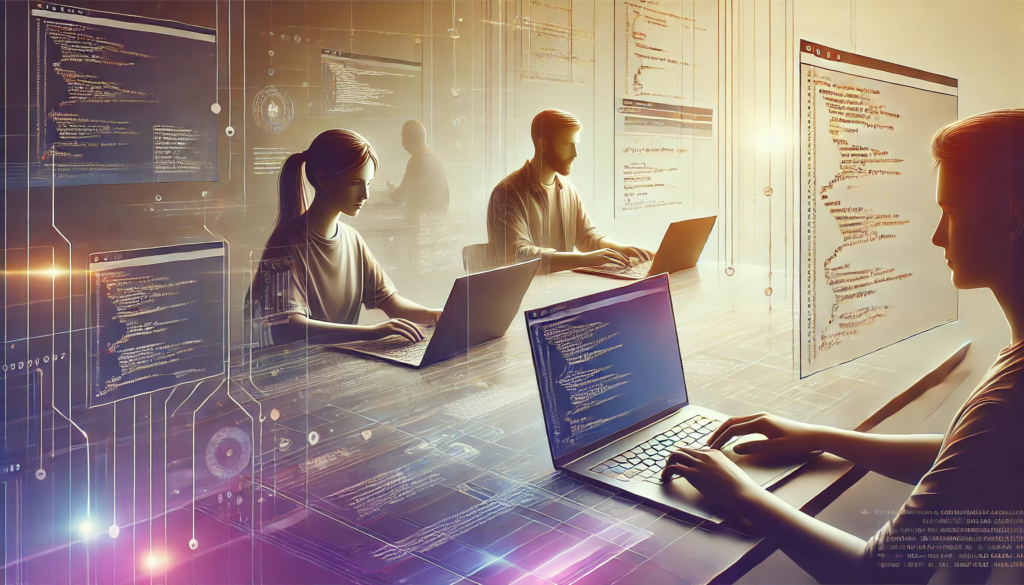Coding isn’t just for tech prodigies or child geniuses who started tinkering in their basements at 10 years old. It’s for anyone willing to take the leap. It’s a skill, a powerful, transformative skill, that can open doors to creativity, independence, and opportunity.
I get it. When you hear words like “syntax errors” or “algorithms,” it can feel intimidating. Trust me, I’ve been there. But coding isn’t some mystical art reserved for the ultra-smart, it’s a tool that anyone can learn with the right mindset and resources.
Whether you’re a high school student dreaming of building apps, a working mom juggling responsibilities, or someone in their 40s pivoting into a new career, the world of programming is waiting for you. Let’s break this down, step by step.
Overcoming the Fear of Coding
When I first started coding with IOS development, I felt like I was reading a foreign language. “Full-stack development?” I remember thinking, What does that even mean? But here’s what I learned: coding isn’t about knowing everything, it’s about problem-solving one piece at a time.
Here are some myths about coding—and the truths that debunk them:
Myth: “You need to be a math genius.”
Truth: Coding is more about logic and creativity than advanced math. If you can organize a grocery list or solve a puzzle, you can code.Myth: “I don’t have time to learn.”
Truth: Progress isn’t about marathon sessions. Even 20 minutes a day can lead to real growth over time.Myth: “I’ll never be good at it.”
Truth: Every programmer, no matter how experienced, Googles solutions. Struggling is part of the process, and it’s how you learn.
I’ll never forget the first time I encountered a “syntax error.” It felt like the computer was yelling at me. But over time, I realized that each error was just a clue, pointing me toward a solution. That shift in mindset, from frustration to curiosity, made all the difference.
Your Roadmap to Learning to Code
Step 1: Choose Your Path
Not all coding languages are the same, your goals should guide your choice.
- Web Development: HTML, CSS, and JavaScript are your starting points.
- Data Analysis: Dive into Python or R.
- App Development: Try Swift (for iOS) or Kotlin (for Android).
- Automation: Python is a fantastic, beginner-friendly option.
Pro Tip: Don’t overwhelm yourself by trying to learn multiple languages at once. Stick to one, and focus on building a solid foundation.
Step 2: Use Beginner-Friendly Platforms
These platforms make learning interactive and fun:
- FreeCodeCamp: Offers free lessons and projects in web development and more.
- Codecademy: Provides step-by-step interactive exercises.
- Khan Academy: Great for understanding programming logic.
Tips to Stay Motivate
You don’t have to go it alone. Joining a community can make a huge difference:
- Women Who Code: A supportive global network.
- Reddit’s Learn Programming Subreddit: A great place to ask questions without judgment.
- Slack or Discord Groups: Many coding platforms have active communities to connect with.
Community forum are filled with folks sharing their struggles, their little wins, and even free resources they discovered. Seeing others push through their own challenges’s motivating to keep going, even when hiting roadblocks.
Being part of a community with the same objective isn’t just about getting answers to your questions. It’s about having people who hold you accountable, cheer you on, and remind you why you started in the first place.
Why It’s Never Too Late to Start
It’s easy to feel like there’s this invisible wall when you’re starting fresh in a field where everything seems unfamiliar. I remember staring at my first coding exercise, feeling completely overwhelmed. There’s a little voice that creeps in: “This isn’t for you, too inexperienced.” But here’s what I’ve learned: those walls we feel? They’re often self constructed.
The truth is, you bring life experience, or unique background to the table, and that can be a huge advantage. Maybe you’ve spent years solving problems in other areas of your life, parenting, teaching, managing teams, or even running your household.
Tools and Resources to Get Started
- Online Course:
- Dr. Angela Yu: Access her resources on Udemy, where she offers beginner friendly courses on web development, Python, and app design, all with a structured and practical approach.
- Free Resources:
- Interactive Platforms:
- LeetCode: Practice coding challenges for beginners and beyond.
- Hackerrank: Sharpen your problem-solving skills.
- YouTube Channels:
- Traversy Media: Easy-to-follow web development tutorials.
- The Net Ninja: Tons of beginner-friendly playlists on coding topics.
The Take Away – You Belong in Tech
The tech world isn’t just for “geniuses” or “math whizzes.” It’s for everyone with curiosity and determination.
Your journey doesn’t have to look like anyone else’s. It’s yours. Write that first “Hello, World!”, build something messy, or join a community where you feel supported. Celebrate each milestone, no matter how small it seems.
There’s a place for your voice, and your creativity in this evolving industry. Don’t let fear hold you back. Take that first step, it’s always the hardest, but it’s the one that sets everything else in motion.




